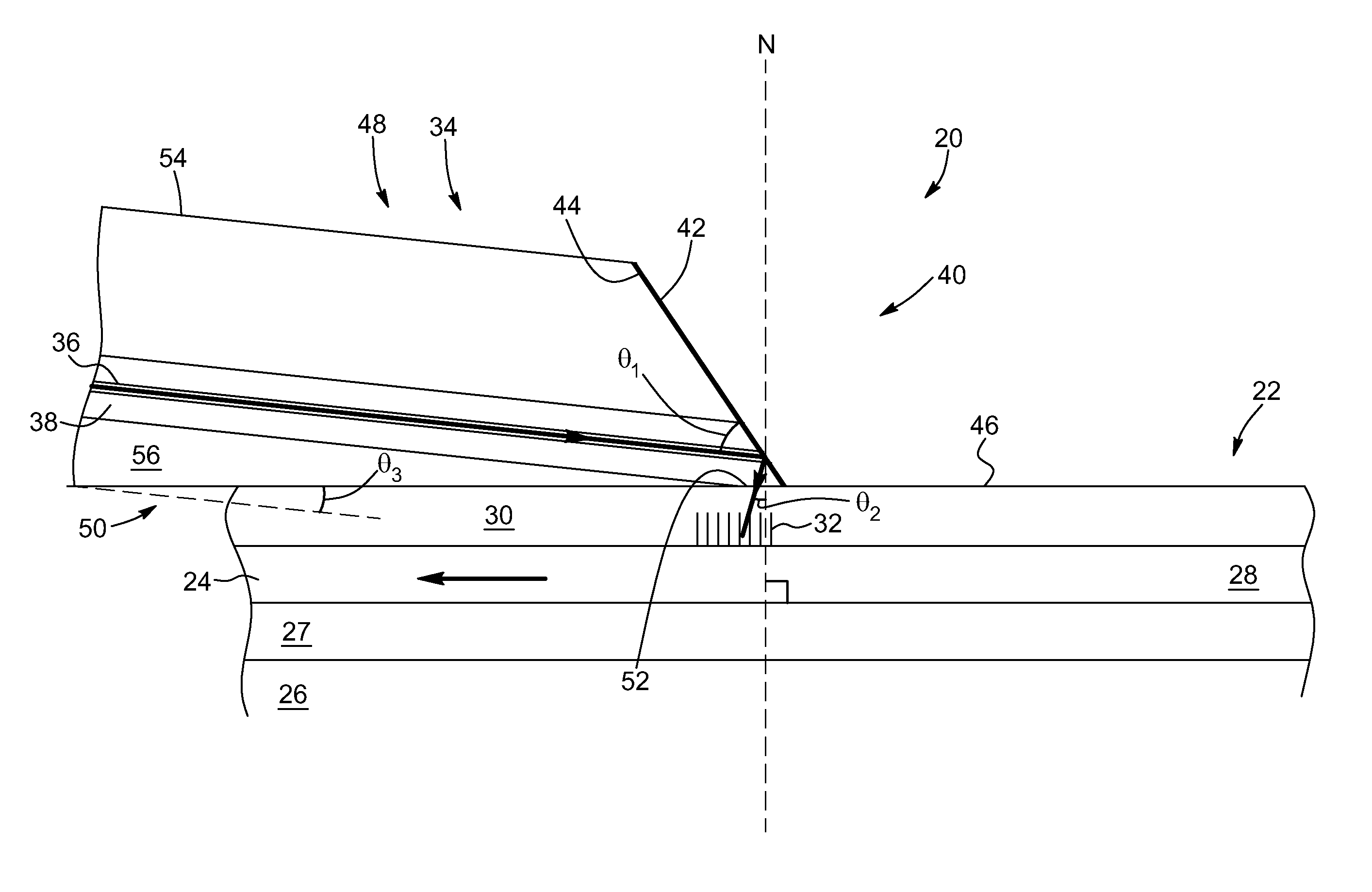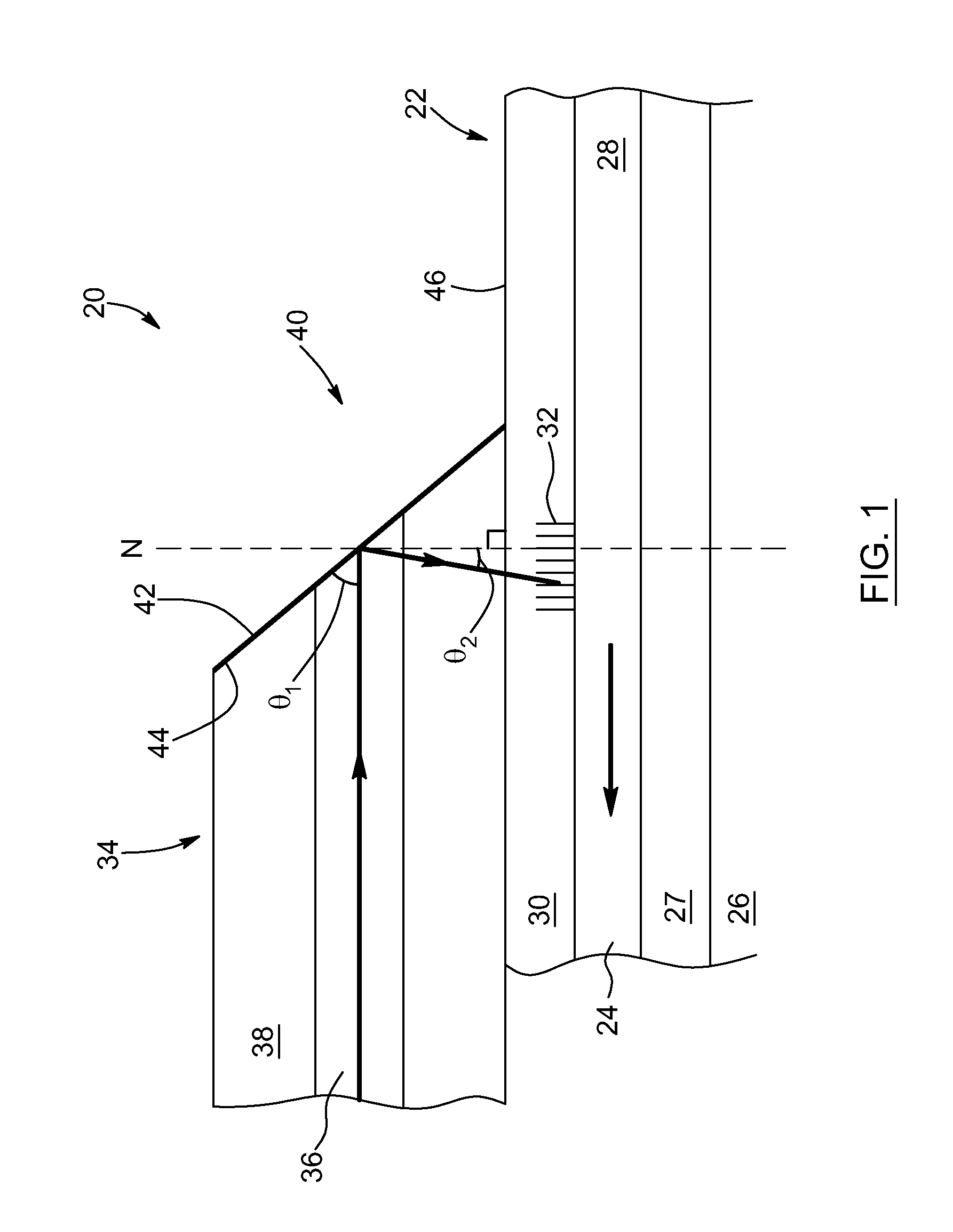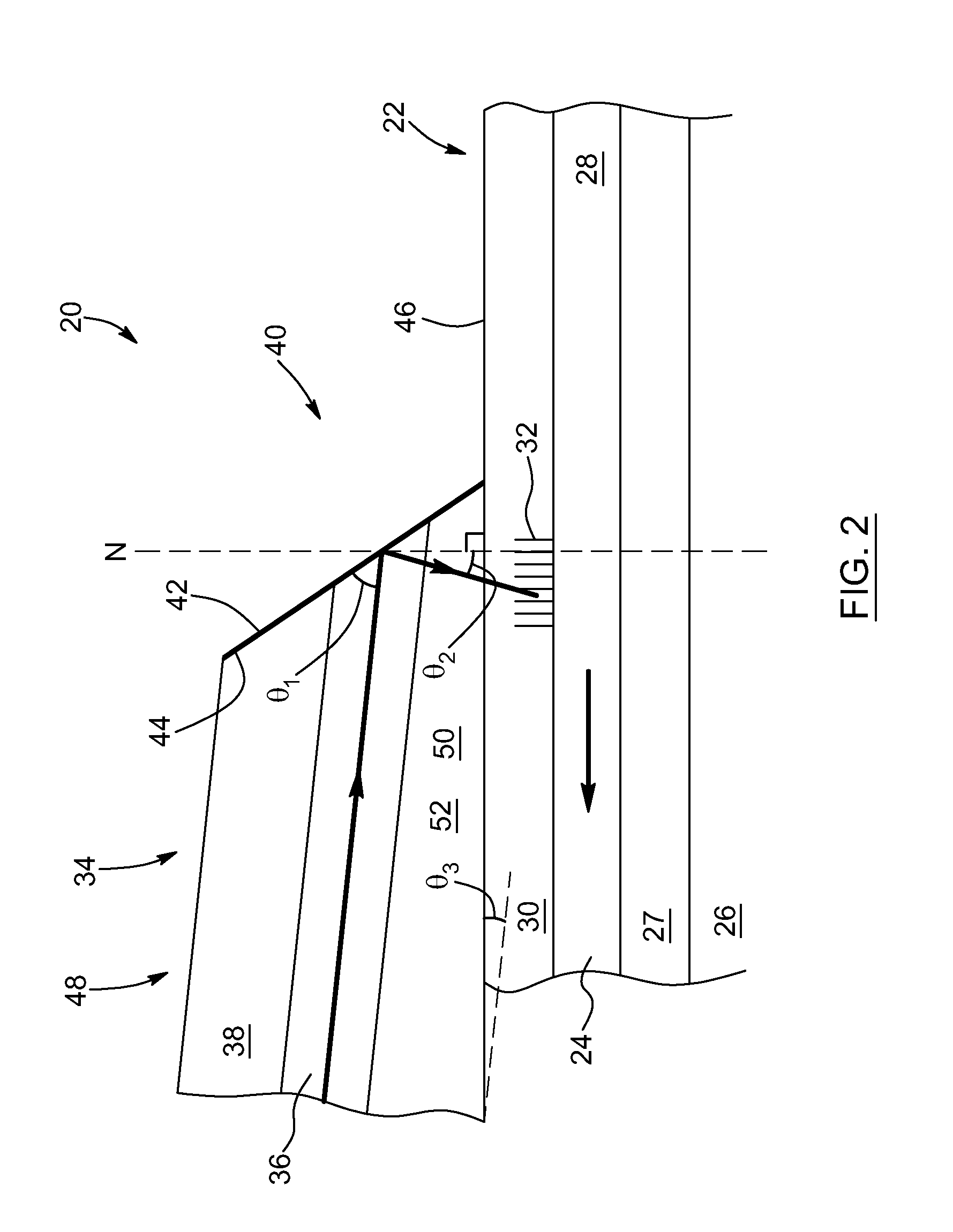Fiber coupling technique on a waveguide
a waveguide and fiber technology, applied in the field of optical fiber coupling assemblies, can solve problems such as signal loss, and achieve the effects of reducing polishing difficulties, less fragile, and convenient manufacturing
- Summary
- Abstract
- Description
- Claims
- Application Information
AI Technical Summary
Benefits of technology
Problems solved by technology
Method used
Image
Examples
Embodiment Construction
[0036]The present invention generally relates to optical coupling assemblies for coupling light from an optical fiber into a planar waveguide.
[0037]Embodiments of the present invention may be particularly useful in any applications where it is necessary to couple light propagating in an optical fiber into a planar waveguide, or vice versa. In particular, although embodiments described herein may refer to the coupling of light from an optical fiber into a planar waveguide, it will be understood that the optical coupling assembly may also be employed in order to couple light from a planar waveguide into an optical fiber. Optical coupling assemblies according to embodiments of the present invention may be part of photonic integrated circuits used for various applications including, without being limited to, telecommunications, instrumentation, signal processing, and optical sensors.
[0038]FIG. 1 shows a schematic cross-sectional side view of an exemplary optical coupling assembly 20 acc...
PUM
 Login to View More
Login to View More Abstract
Description
Claims
Application Information
 Login to View More
Login to View More - R&D
- Intellectual Property
- Life Sciences
- Materials
- Tech Scout
- Unparalleled Data Quality
- Higher Quality Content
- 60% Fewer Hallucinations
Browse by: Latest US Patents, China's latest patents, Technical Efficacy Thesaurus, Application Domain, Technology Topic, Popular Technical Reports.
© 2025 PatSnap. All rights reserved.Legal|Privacy policy|Modern Slavery Act Transparency Statement|Sitemap|About US| Contact US: help@patsnap.com



